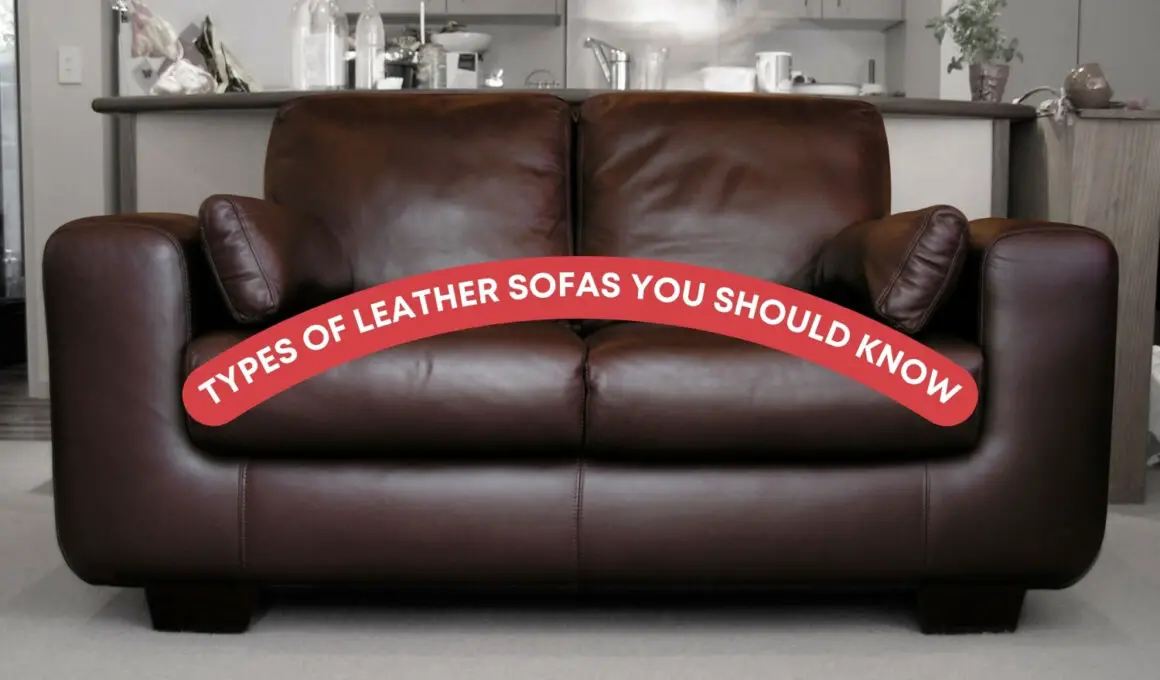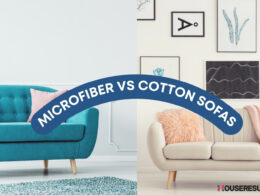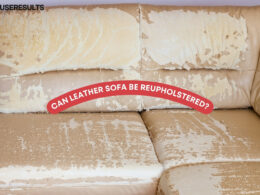Table of Contents Show
Whether you’re redesigning your living space or selecting furniture for your brand-new home, the decision of picking the perfect sofa can lead you into a maze of options.
As someone who has spent years crafting homes into spaces that resonate with comfort and style, I’ve seen firsthand how the right choice can serve as the cornerstone for your entire room’s aesthetic. And leather sofas are a universal favorite when it comes to timeless appeal and sophistication.
But leather sofas aren’t a one-size-fits-all solution. From the upscale allure of full-grain pieces to the eco-conscious faux leather alternatives, understanding the distinctive types can significantly influence your satisfaction with the purchase.
Today, we’re going to simplify this often overwhelming decision. We’ll explore the five popular types of leather sofas, shedding light on their perks and pitfalls, helping you make an informed choice that you’ll love for years to come.
1. Full Grain Leather Sofas

When it comes to premium furniture, full-grain leather holds a place of reverence. Full-grain leather comes from the hide’s top layer and includes all the natural grain, hence its name. This type of leather retains the inherent toughness imperfections and unique textures of the animal skin.
One of its most lauded characteristics is its ability to age beautifully, developing patina enthusiasts often find appealing.
Pros and Cons of Full Grain Leather Sofas
Pros
- Highly durable, standing up well to daily wear and tear.
- Breathable material that doesn’t retain moisture, making it comfortable for seating.
- Each piece is unique, with its own set of natural markings.
Cons
- Often comes with a higher price tag due to its premium quality.
- Can show scratches and requires a certain level of maintenance to keep it looking its best.
Suitable Home Styles and Decors
Full-grain leather sofas bring a sense of luxury and sophistication, making them ideal for classic or contemporary styles. They fit well in decor schemes that emphasize natural materials, and they add warmth and richness to minimalist, modern, or rustic settings.
Given their quality, they’re perfect centerpieces for a design that’s built to last.
2. Top Grain Leather Sofas
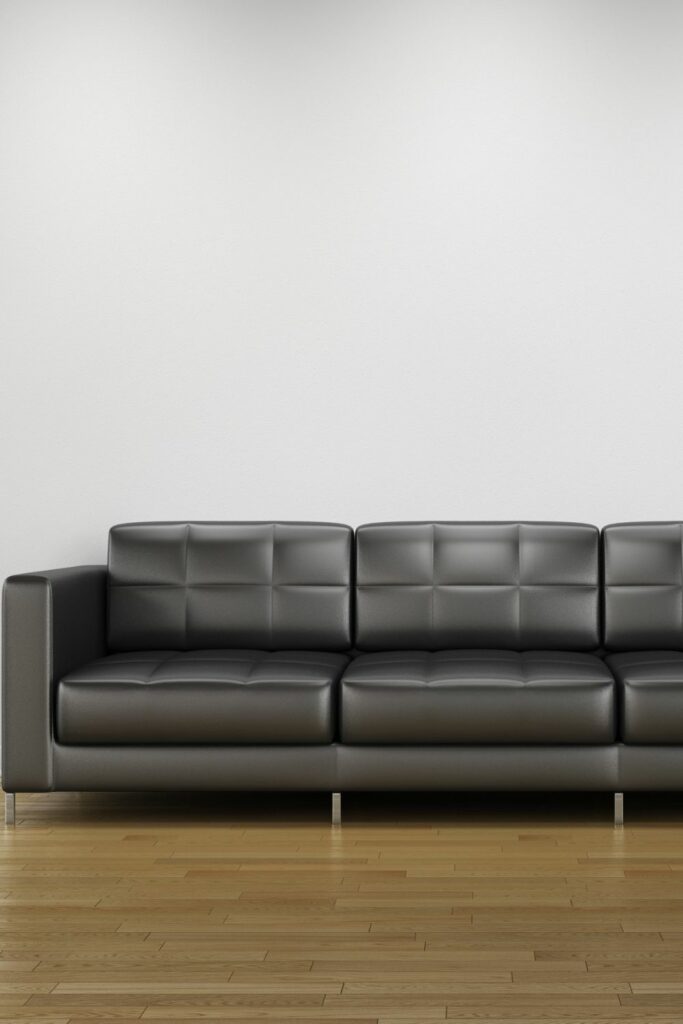
In the realm of leather furnishings, top-grain leather offers a delightful balance of comfort and aesthetic appeal. According to a publication in the Journal of American Leather Chemists Association, top grain leather undergoes a process to remove the very top layer of the hide to eliminate imperfections.
This process creates a product that’s more uniform in appearance and slightly more pliable than full-grain leather.
Advantages and Potential Downsides of Top Grain Leather Sofas
Advantages
- It provides a more consistent look and finish, appealing to those who prefer uniformity.
- It’s typically softer and more comfortable from the start, without the extensive break-in period.
- Resistant to stains, thanks to its finish coat.
Downsides
- Doesn’t develop the same esteemed patina over time that full grain does.
- While still durable, it’s not as tough as full grain, making it slightly more vulnerable to scratches.
Maintenance Tips
Taking care of top-grain leather requires a gentle hand. Regular dusting with a soft cloth and occasional treatment with a specialized leather conditioner keep the sofa looking pristine. It’s also advisable to avoid direct sunlight or high temperatures, which could dry out the leather. Quick attention to spills can prevent staining and maintain the leather’s appealing finish.
3. Split Grain Leather Sofas
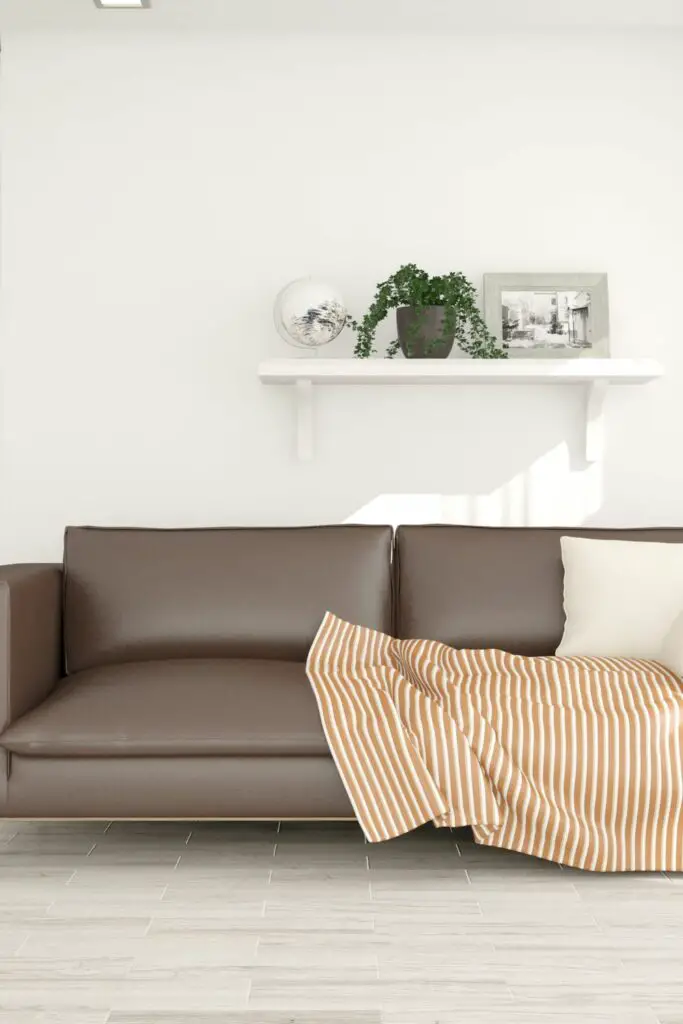
Split-grain leather takes a different position in the hierarchy of leather quality. During processing, the top layer of the hide is removed, and the lower layers are used to create split-grain leather.
This method contrasts with what you find in more premium selections, focusing instead on a more cost-effective solution without sacrificing all the leather’s natural appeal.
The texture of split-grain leather is notably different, more rugged, and less smooth, lacking the natural grain pattern that comes from the upper layers of the hide. However, this doesn’t translate to a short-lived product.
While not as robust as full or top grain, split grain leather still offers reasonable durability, often serving as a preferred material for items like furniture backings or sides.
When to Choose Split Grain Leather
Opting for split grain is often a matter of budget and application. It’s suitable for those seeking leather’s aesthetic but at a more accessible price point. However, understanding its limitations is key.
It is ideal for spaces that see less traffic or areas where the furniture may not be the centerpiece but part of a broader ensemble. When cost management is as crucial as style, split grain takes a worthy spot.
4. Bonded Leather Sofas

Navigating the world of leather, you might come across options that seem too good to be true, both in price and presentation. Bonded leather is one such material.
It’s manufactured by combining leather scraps and fibers, bound together with polyurethane or latex on a fiber sheet. Essentially, it’s a composite of leather remnants, making it an extremely economical option.
However, bonded leather’s market entry hasn’t been without controversy. While it utilizes leather fragments, its percentage of actual leather varies, often being quite low, which impacts its quality and durability.
This material doesn’t breathe like traditional leather, nor does it age the same way. Over time, bonded leather may crack or peel, lacking the longevity expected of its higher-grade counterparts.
Why and When to Buy Bonded Leather Sofas
Despite these aspects, bonded leather isn’t without its merits. It allows for a significantly lower price point, and with advances in manufacturing, its appearance can closely mimic more premium types.
Bonded leather can be an appropriate choice for temporary setups, staging properties, or when operating under a tight budget. It’s also an option for those not ready to commit to the maintenance required for genuine leather pieces.
5. Faux Leather Sofas

Stepping into the realm of leather alternatives, we encounter faux leather, a product that champions versatility and conscientious living. Faux leather, or “synthetic” leather, replicates the look and feel of real leather but is manufactured without using animal hides.
It is typically made from a plastic base and then treated with wax, dye, or polyurethane to create color and texture.
Environmental Impact
One of the compelling reasons homeowners are drawn to faux leather is its environmental aspect. It’s a cornerstone for those seeking vegan interior decor, providing the leather aesthetic without the use of animal products.
Moreover, with advancements in technology, new varieties of faux leather, such as those made from pineapple leaves or cork, are emerging on the market, offering even more environmentally sustainable choices.
Faux vs. Real Leather: Aesthetics and Performance
While faux leather mimics the look of genuine leather, discerning individuals might spot differences. Faux leather has a more uniform pattern and texture, as it’s machine-made, lacking the unique imperfections of genuine leather.
In terms of performance, high-quality faux leather can rival the durability of real leather, but it generally doesn’t age into a patina and can be less breathable.
However, where faux leather shines is in its maintenance. It’s more resistant to spills and messes, making it a favorite for busy households or those with pets and children.
Care and Maintenance
Faux leather requires care that considers its synthetic nature. Regular wiping with a damp cloth can help clear dust and debris, and immediate attention to spills prevents potential stains.
Avoid harsh cleaners, which can strip the material’s finish, and keep the sofas out of direct sunlight to prevent drying and cracking. Periodic use of a specially designed faux leather conditioner can help maintain the sofa’s sheen and pliability.






